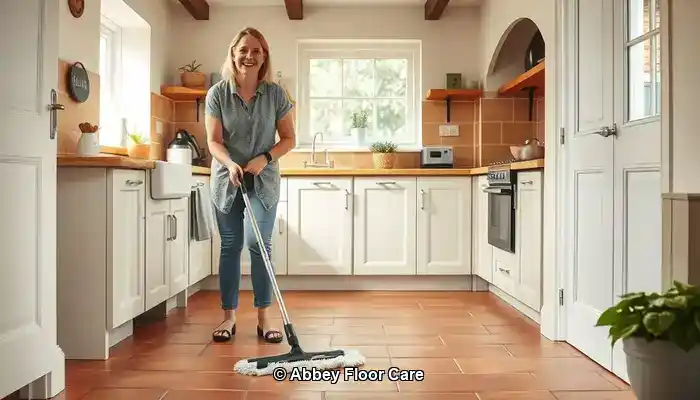
Last Updated on September 29, 2025 by David
Essential Techniques to Maintain Spotless Terracotta Floors
-
- The porosity of Terracotta makes it susceptible to dirt accumulation, especially in damp climates like Surrey.
- Proper sealing is crucial to prevent moisture and dirt from penetrating the tile surface.
- Consistent maintenance is vital—daily sweeping and weekly mopping with pH-neutral cleaners will help retain the tile’s visual appeal.
- Steer clear of harsh chemicals and steam mops, as they may damage the sealant and etch the tile’s surface.
- <a href="https://www.abbeyfloorcare.co.uk/home-garden/can-you-recommend-the-safest-products-for-cleaning-sandstone/">Opt for eco-friendly cleaning products</a>, particularly in homes with children or pets.
- <b>Engaging professional restoration services</b> can ensure thorough cleaning and resealing for enhanced long-term protection.
- Implement strategically positioned rugs and mats in high-traffic areas to significantly reduce dirt transfer.
- Manage moisture levels—proper ventilation and prompt spill cleanups are essential to prevent staining and mould growth.
Understanding the Rapid Accumulation of Dirt on Terracotta Tiles
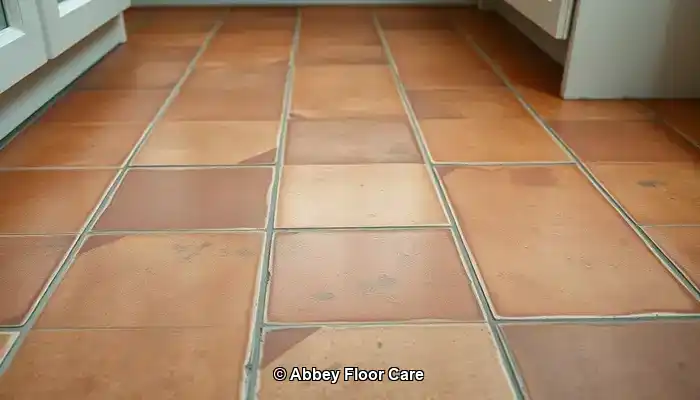
Terracotta tiles provide a visually attractive flooring choice, particularly in traditional or rustic-style homes situated in Surrey. Their warm hues and natural texture add a distinctive charm to any environment. Nevertheless, despite their aesthetic appeal, terracotta is notorious for becoming dirty at an alarming rate. Recognising the underlying causes of this swift soiling is essential for implementing effective cleaning and maintenance practices.
Professional Insights: Recommended Products for Daily Terracotta Care
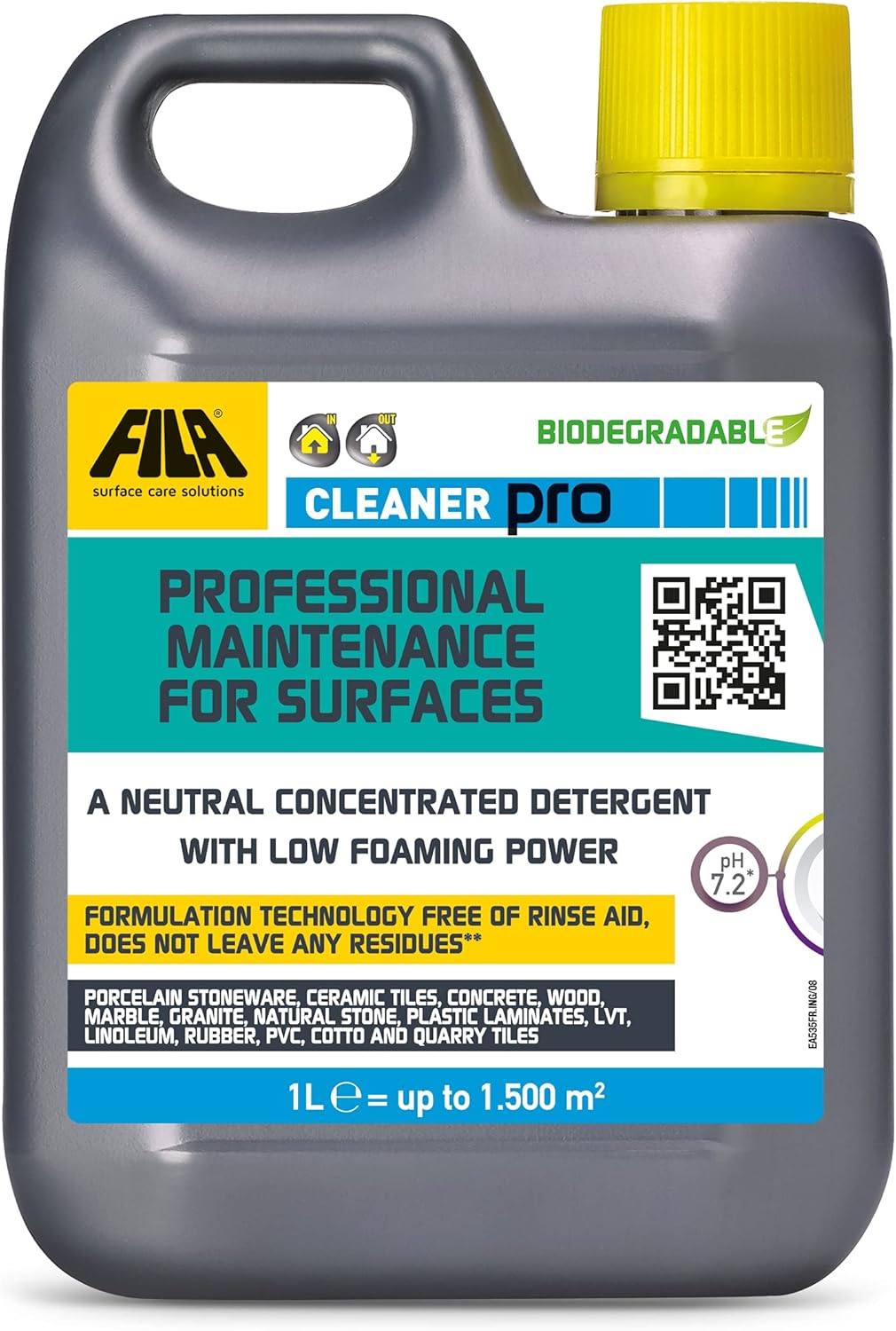
Fila Pro Floor Cleaner
|
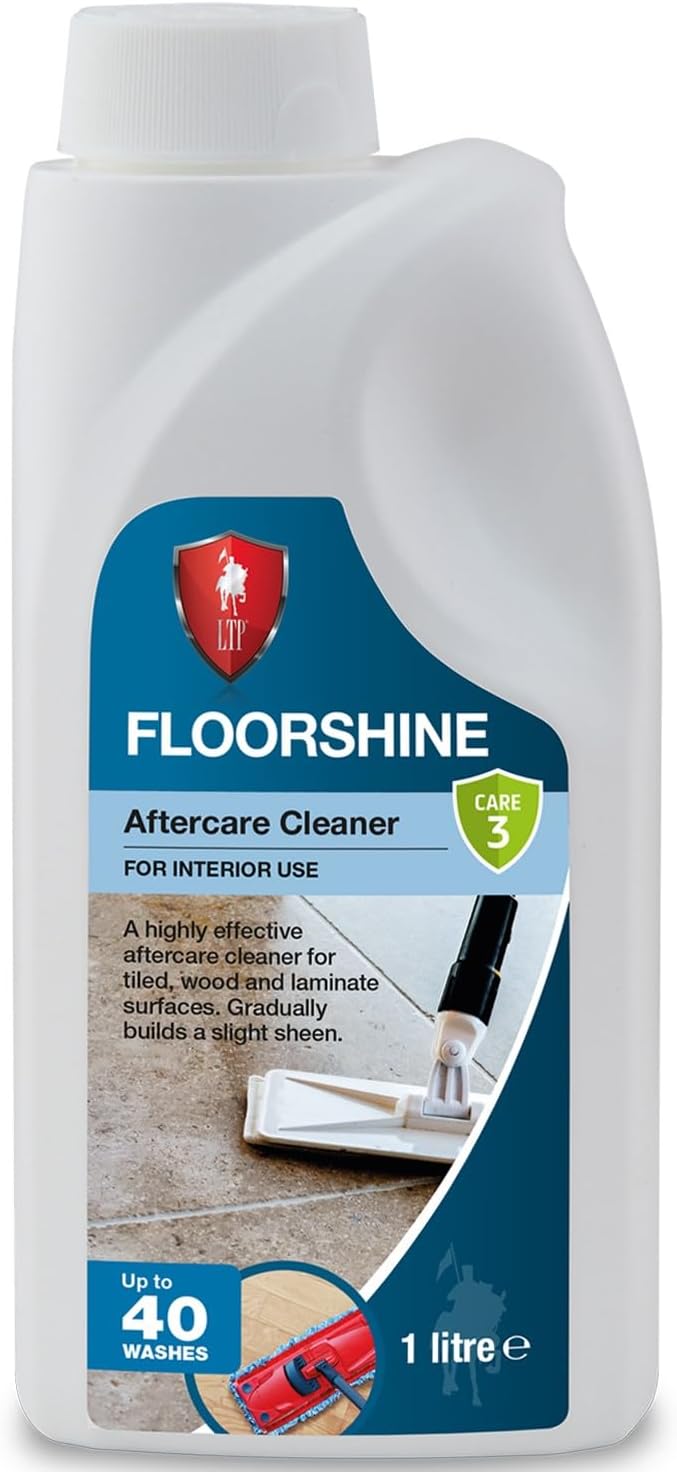
LTP Floorshine
|
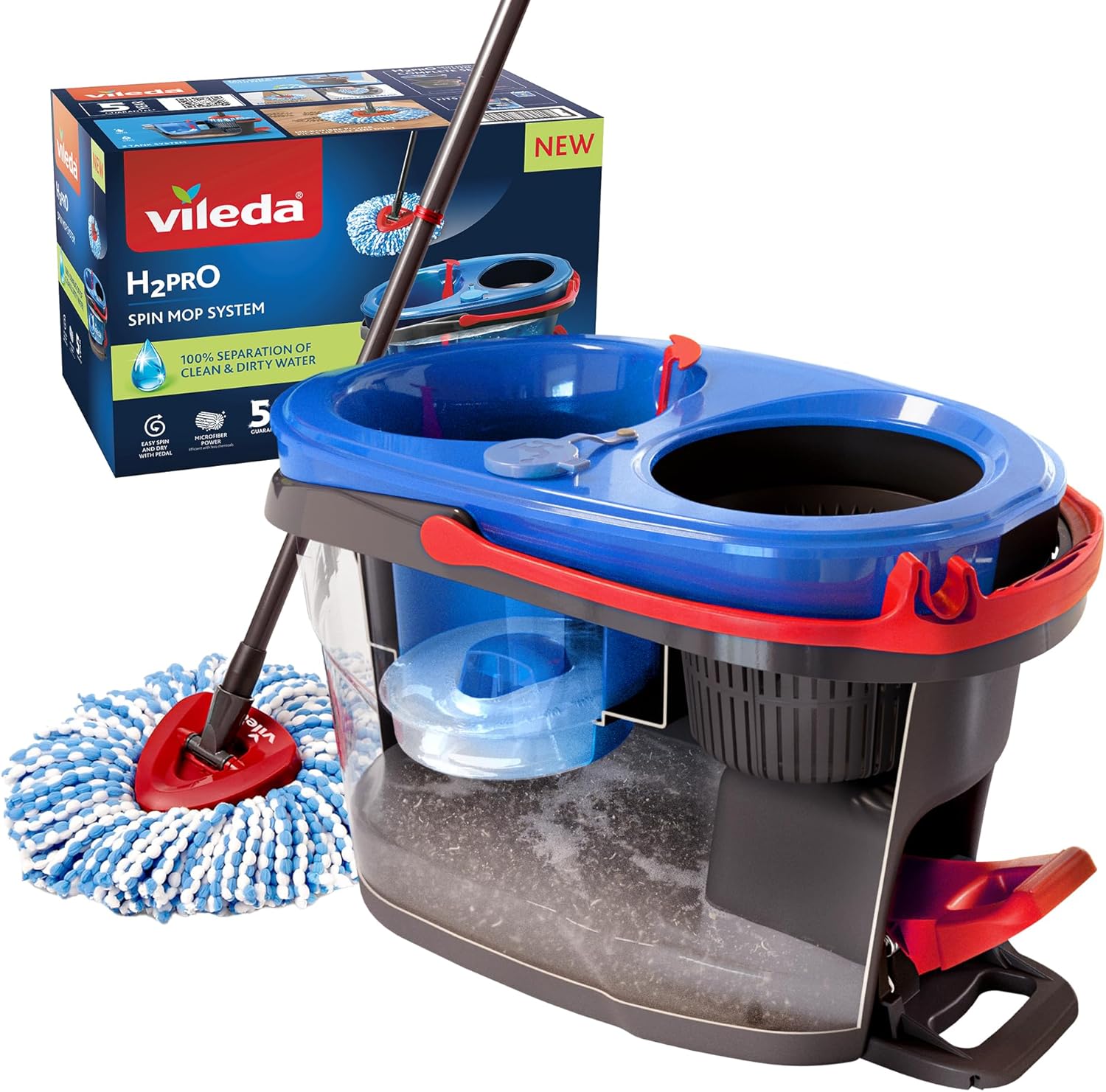
Vileda H2PrO Spin Mop System
|
Exploring Porosity: Understanding Dirt Accumulation on Terracotta
Terracotta is crafted from natural clay and fired at lower temperatures in comparison to other types of tiles. This manufacturing technique results in a highly porous surface that can absorb moisture, oils, and dirt like a sponge. As a result, this porosity allows grime to penetrate deeply into the tile, creating challenges for removal with conventional cleaning methods.
Unsealed terracotta is particularly vulnerable to soiling. Without a protective barrier, even minor spills or muddy footprints can leave enduring stains. Over time, this can contribute to a dull and stained appearance that becomes increasingly difficult to restore without the intervention of professionals.
How Surrey’s Climate Affects the Cleanliness of Terracotta Floors
The prevailing weather conditions in Surrey significantly influence how quickly terracotta floors accumulate dirt. The region’s frequent rainfall and dampness often result in increased moisture being tracked indoors, especially in entryways and conservatories.
Homes located near wooded areas or gardens face an even greater risk of dirt accumulation. Soil, pollen, and organic debris can easily be transferred onto terracotta surfaces, particularly if shoes are not removed upon entering the house.
Daily Habits That Contribute to Increased Dirt Build-Up on Terracotta
In addition to environmental factors, daily routines can exacerbate the problem of dirt accumulation. The use of inappropriate cleaning products—such as acidic solutions or bleach—can strip protective coatings and cause damage to the tile’s surface. While steam mops may seem convenient, they often push moisture deeper into the tile, worsening the issue.
Areas with high foot traffic, such as kitchens and hallways, naturally undergo more wear and tear. Without routine sweeping and mopping, dirt can accumulate rapidly and become embedded within the texture of the tile.
Proactive Strategies to Maintain Cleaner Terracotta Tiles
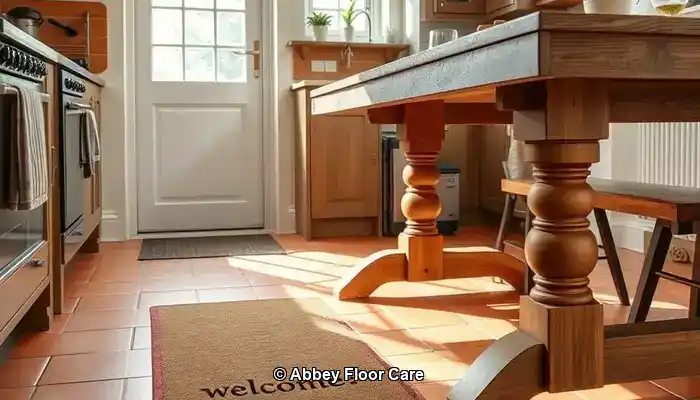
Maintaining the cleanliness of terracotta floors necessitates proactive measures designed to prevent dirt from settling initially. In homes throughout Surrey, where damp weather and garden traffic are common, engaging in preventative care is essential to uphold the natural beauty of terracotta tiles.
Sealing: The First Line of Defence Against Dirt Accumulation
The most effective strategy to prevent terracotta from becoming dirty quickly is to ensure it is adequately sealed. A high-quality, breathable sealant establishes a protective barrier that repels moisture, oils, and grime. In Surrey, where humidity levels fluctuate, sealing becomes critical in thwarting water absorption that can lead to staining and mould growth.
Experts recommend resealing terracotta every 12 to 18 months, depending on foot traffic and exposure. In busy areas, such as kitchens, hallways, and conservatories—where daily use is prevalent—more frequent sealing may be necessary. Always select a sealant specifically designed for porous stone and avoid glossy finishes that can trap dirt on the surface.
Smart Design Choices: The Role of Rugs and Mats in Protecting Terracotta
Thoughtfully placing rugs and mats can significantly lessen the amount of dirt that comes into contact with your terracotta tiles. Implement heavy-duty doormats at entrances to capture mud and moisture before it can spread indoors. In high-traffic zones like hallways or beneath dining tables, area rugs act as a protective barrier that safeguards the tile from wear and tear.
For rooms that lead outdoors, consider using washable runners that can be easily cleaned. These additions not only help protect the tile but also enhance the warmth and aesthetic appeal of your living space.
Moisture Management in Surrey Homes: A Key to Cleaner Terracotta
Given Surrey’s reputation for rainfall and damp conditions, controlling moisture levels is essential for mitigating dirt accumulation on terracotta. To address this issue, utilise dehumidifiers in enclosed spaces and ensure proper ventilation throughout your home. Promptly wipe up spills and avoid leaving wet items—such as shoes or towels—lying on the floor.
If your terracotta is installed in a conservatory or garden room, consider adding blinds or UV filters to reduce condensation and guard against sun damage. These small adjustments can have a substantial impact on the longevity and appearance of your tiles over time.
By combining effective sealing, smart design choices, and moisture management, homeowners in Surrey can substantially diminish the rate at which terracotta floors become dirty. In the following section, we will explore the best cleaning practices to maintain that fresh, natural appearance day after day.
Optimal Cleaning Practices for Terracotta Tiles
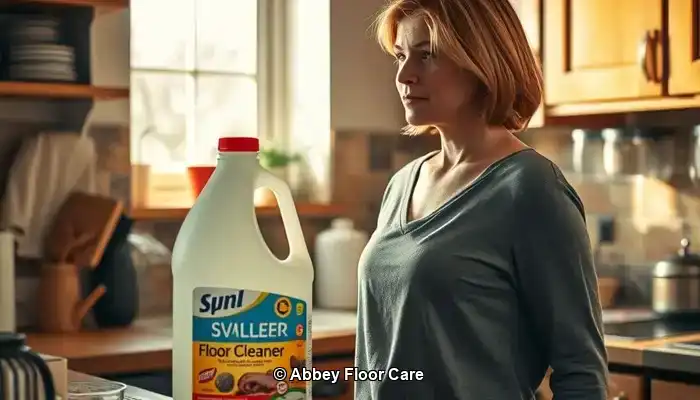
Even with proper sealing and preventative strategies, terracotta floors require regular attention to maintain their natural beauty. The key lies in employing appropriate techniques and products that effectively cleanse without harming the porous surface of the tile.
Establishing a Routine for Daily and Weekly Cleaning
In homes across Surrey, where outdoor elements frequently enter, daily sweeping or vacuuming is imperative. Use a soft-bristle broom or a vacuum with a hard floor setting to remove dust, grit, and organic debris before it settles into the tile.
For weekly cleaning, mop the floors with warm water and a pH-neutral cleaner specifically formulated for natural stone. It is crucial to avoid soaking the floor; a damp mopping approach is the best practice. Excessive water can seep into the tile and lead to staining or mould growth, particularly in older or poorly sealed installations.
Selecting the Right Products for Cleaning Terracotta
Choose products that are both gentle and effective. Seek labels that state “stone-safe,” “non-acidic,” or “pH-neutral.” In Surrey, where eco-conscious living is increasingly valued, many homeowners prefer biodegradable cleaners that are safe for pets and children.
Avoid using multi-surface cleaners containing bleach, ammonia, or citrus extracts, as these can strip away sealants and etch the terracotta, making it more susceptible to future staining.
For stubborn stains, employ a soft cloth and a diluted solution of stone cleaner. Never scrub with abrasive pads or wire brushes, as these can scratch the surface and complicate future cleaning efforts.
Harsh Chemicals and Methods to Avoid for Terracotta Care
While steam mops may appear convenient, they are unsuitable for terracotta. The intense heat and moisture can penetrate the tile and weaken the sealant, leading to long-term damage. Similarly, acidic cleaners like vinegar or lemon juice—even when diluted—can erode the tile’s surface and cause discolouration.
Stick to gentle cleaning methods and always test any new products on a small, discreet area before applying them to the entire floor.
Weighing Professional Care Against DIY Terracotta Maintenance
When it comes to maintaining terracotta floors, many homeowners in Surrey begin with DIY cleaning methods. While routine sweeping and mopping can be effective, there comes a time when professional assistance is not only beneficial but essential.
When Should I Consult a Tile Specialist in Surrey?
If your terracotta tiles exhibit signs of deep staining, uneven colour, or surface wear, it may be the right moment to seek professional help. Tile care specialists in Surrey utilise advanced equipment and stone-safe products that penetrate deeper than standard household cleaners. They can also evaluate if your sealant has deteriorated and recommend a suitable resealing schedule tailored to your home’s specific conditions.
Restoration services typically encompass deep cleaning, stain removal, and reapplication of breathable sealants that protect without altering the natural appearance of the tile. For older homes or heritage properties, specialists can even match the original finish to maintain authenticity.
Assessing Cost Versus Longevity: Is Professional Care Worth It?
While DIY cleaning may seem more cost-effective, it often results in temporary solutions. Without proper sealing and deep cleaning, dirt will continue to build up, necessitating more frequent maintenance and risking permanent damage.
Conversely, professional care can considerably extend the life of your terracotta floors. A single restoration session can rejuvenate colour, eliminate embedded grime, and safeguard the surface for months or even years. In high-traffic areas like kitchens and hallways, this investment proves advantageous in terms of reduced maintenance and enhanced visual appeal.
Homeowners in Surrey who value long-term property care and curb appeal often discover that expert services offer peace of mind and superior results. Additionally, many local providers offer eco-friendly options and tailored maintenance plans to suit individual lifestyles.
Exploring Eco-Friendly and Safe Cleaning Alternatives for Terracotta
The earthy charm of terracotta deserves care that is equally natural. For homeowners in Surrey eager to keep their floors pristine without compromising health or sustainability, eco-friendly cleaning is the optimal choice. Fortunately, modern products and techniques enable the protection of your tiles—and your household—without resorting to harsh chemicals.
Selecting Non-Toxic Sealants and Cleaners
Conventional sealants often contain solvents that release volatile organic compounds (VOCs), which can linger in the air and adversely affect indoor air quality. Today’s eco-friendly alternatives feature water-based formulations that are low in VOCs and safe for use around children and pets.
When selecting a cleaner, look for labels that indicate “biodegradable,” “plant-based,” or “stone-safe.” These products are designed to effectively lift dirt without harming the porous nature of terracotta. Brands that specialise in natural stone care often provide concentrated solutions that can be diluted for everyday use, thus minimising waste and packaging.
Safe Cleaning Options for Pets and Children
In busy Surrey households, safety is just as important as cleanliness. Avoid bleach, ammonia, and acidic cleaners like vinegar, which can damage the tile and pose risks to pets and young children. Instead, opt for gentle formulas derived from coconut oil, citrus enzymes, or mineral-based ingredients.
For those who favour DIY cleaning, a simple mixture of warm water and a few drops of castile soap can be highly effective for light cleaning tasks. Just remember to test any homemade solution on a small area first to ensure it won’t affect the sealant or finish.
Implementing Sustainable Cleaning Practices
Eco-friendly care extends beyond merely selecting products—it also involves adopting responsible habits. Use reusable microfiber cloths and mops instead of disposable pads. Sweep regularly to reduce the necessity for frequent wet cleaning. When resealing, choose products that come in recyclable packaging and have minimal environmental impact.
Numerous floor care professionals in Surrey now offer green cleaning packages, employing certified non-toxic products and sustainable methods. If you are unsure where to begin, booking a consultation with a local expert can help establish a routine that is both effective and environmentally conscious.
Ensuring Your Terracotta Floors Remain Immaculate
Terracotta flooring exudes warmth, character, and timeless elegance in homes across Surrey; however, its porous nature necessitates careful management to uphold cleanliness and vibrancy. By understanding the factors contributing to rapid dirt accumulation, ensuring proper sealing, and adopting smart cleaning habits, you can significantly curtail grime build-up and prolong the life of your tiles.
Whether managing a busy household or restoring a heritage property, consistency is paramount. Daily sweeping, pH-neutral cleaning, and seasonal resealing are effective strategies for maintaining a well-kept appearance. And when stains or wear begin to manifest, do not hesitate to seek the assistance of a local specialist for professional restoration.
Utilising eco-friendly products and safe cleaning routines ensures that your floors remain beautiful without compromising health or environmental integrity. With the right approach, terracotta can continue to be a stunning feature in your home for many years to come.
Are you ready to protect your floors intelligently? Contact us today for expert terracotta maintenance tailored to the unique conditions of Surrey. Let’s keep your home looking its best—naturally.
Common Queries Regarding Terracotta Floor Maintenance
Terracotta floors are timeless, yet they necessitate specific care. Below are answers to the most frequently asked questions from homeowners in Surrey striving to maintain their tiles’ cleanliness, protection, and aesthetic appeal.
How Frequently Should I Reseal My Terracotta Tiles?
In most Surrey residences, it is advisable to reseal terracotta every 12 to 18 months. However, this timeframe may vary depending on foot traffic, moisture exposure, and whether the tiles are indoors or outdoors. Areas like kitchens, hallways, and conservatories may require more frequent resealing. If your tiles begin to absorb water or appear dull, it is time to reseal.
Is it Safe to Use Vinegar or Bleach on Terracotta Tiles?
No—vinegar, bleach, and other acidic or harsh cleaners can damage terracotta. These substances break down sealants and etch the tile surface, leading to permanent discolouration. Always choose pH-neutral, stone-safe cleaners specifically formulated for porous flooring.
What Type of Mop is Best for Cleaning Terracotta Floors?
A microfiber mop is ideal. It effectively captures dust and dirt without scratching the surface and employs minimal water, which is crucial for porous tiles like terracotta. Avoid sponge mops or steam mops, as these can oversaturate the tile and weaken the sealant.
Are DIY Cleaning Solutions Safe for Terracotta?
Yes, but caution is necessary. A mild mixture of warm water and castile soap can be effective for light cleaning. Always test any homemade solution on a small, hidden area first. Avoid anything acidic or abrasive, and refrain from using homemade cleaners on unsealed tiles.
What Should I Do If My Tiles Are Already Stained?
If stains have penetrated the tiles, professional restoration is the most effective option. Tile care specialists in Surrey can perform deep cleaning, remove embedded grime, and reseal the surface to restore the tiles’ original colour and texture. DIY methods may exacerbate the damage if inappropriate products are utilised.
The Article Tired of Dirty Terracotta? How to Keep It Clean Longer was first found on https://www.abbeyfloorcare.co.uk
The Article Keep Terracotta Clean Longer: Effective Maintenance Tips appeared first on https://fabritec.org
The Article Terracotta Maintenance Tips for Longer Lasting Cleanliness Was Found On https://limitsofstrategy.com

